URL : Rashida Mendes
Type: Digital Marketing Consultant
Clients: SMBs, Ecommerce, Industry Experts
Tags: SEO, SEM, Competitor Research, E-commerce
Introduction to VisualSitemaps and AI Automation
Benefits of using AI automation in website development
The integration of AI automation in website development offers a multitude of benefits that can significantly enhance productivity and output quality. One of the primary advantages is the automation of repetitive tasks, which saves valuable time and allows marketers, devs, UX/web designers to concentrate on more complex and creative aspects of their work. AI automation excels in data analysis, providing precise insights that can inform decision-making and strategy. Additionally, it plays a crucial role in optimizing website structure and meta tags, which are essential for improving search engine rankings. By generating visual sitemaps and ensuring that all elements of a website are aligned with SEO best practices, AI automation helps you create high-quality websites that effectively meet the needs of their target market.
When digital marketing consultant and no-code expert Rashida Mendes set out to streamline her process for launching new brands and micro-sites, she was driven by a key challenge: how to efficiently gather and analyze competitors’ content, visual style, and keyword strategy—without spending endless hours copying and pasting. Her clientele ranges from emerging entrepreneurs to established businesses looking to break into new markets, all of whom benefit greatly from quick, insightful competitive research.
To tackle this, Rashida developed a unique four-phase approach that combines the power of VisualSitemaps with AI-driven automation. By using these tools in tandem, she cuts research and production time from weeks to mere days. Below, we break down her workflow according to each phase of the attached visual flow and explain how each step helps her quickly spin up new marketing funnels and websites.
“I can pull all competitor data in a single day, push it into my no-code tools, and have AI generate full brand guidelines, landing pages, and marketing copy almost overnight.” – Rashida
Her overarching goal: research, design, and launch new brands (complete with marketing assets) as quickly as possible, often in under a week.
Overview of the Four Phases
Phase 1: Competitive Analysis & Market Research
Phase 2: Enrichment
Phase 3: Production
Phase 4: Final Deliverables
This uniquely bespoke structured method allows Rashida to go from raw competitor data to fully launched digital assets, including ads, style guides, and entire websites.
Step 1: Gathering Competitor Intelligence & Market Research
1.1 Competitor Analysis via Keyword Discovery and Social Networks
Rashida starts by identifying her client’s top competitors with advanced SEO tools like Ahrefs and Semrush. She collects keywords, traffic data, and potential gaps in the market. This high-level insight tells her which sites to investigate further.
She also sets up Google Alerts for brand or topical mentions, monitors relevant newsletters and press releases, tracks brand mentions through specialized alerts, and uses influencer-audience tools like SparkToro. She even looks at competitor YouTube channels—scraping data on their top-performing videos and viewer demographics—to spot who really holds her target audience’s attention.
All of this, combined with standard SEO analyses, gives her a comprehensive view of each competitor’s positioning and content strategy.
1.2 Site Architecture & Screenshot Generation with VisualSitemaps
Next, she inputs all her competitor domains into Visual Sitemaps… clicks “Crawl” and goes to grab a coffee. While sipping on her latte, the cloud-based platform crawls each competitor’s website, generating a visual page to page hierarchical overview of every page, sub-page, and category. During the crawl, it also scrapes all SEO metadata information (page titles, metadata, h1, h2 ) as well as full length high-definition screenshots.
“VisualSitemaps is my starting point. I can see a complete map of competitor pages—no guesswork, no endless clicking. Then I export everything for deeper analysis.”
Rashida then reviews the resulting sitemap to analyze:
- Information Architecture (how pages are structured in terms of topics and topical clusters)
- Content Scope (blog posts, landing pages, resource sections)
- Brand Positioning (messaging, tone, calls-to-action)
- Copy & Style (writing approach, formality, brand voice)
- Images & Fonts (design choices, brand aesthetics)


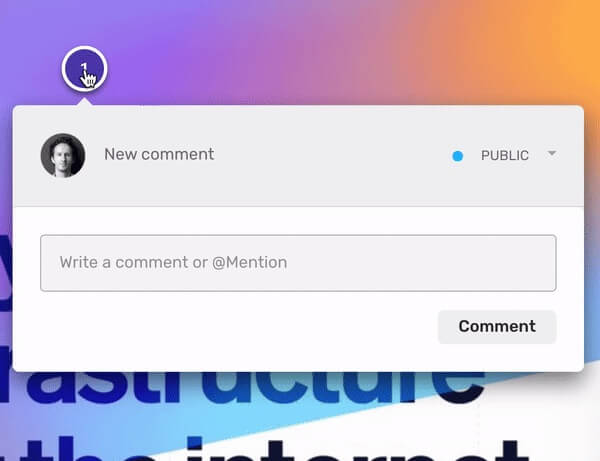 Page Annotations" data-no-bp="" data-bp="720,1032" data-uniqueid="1333-199216" data-guid="https://visualsitemaps.com/wp-content/uploads/2021/04/Annotations.jpg" data-path="2021/04/Annotations.jpg" data-width="600" data-height="461" data-singlew="6" data-singleh="" data-crop="" loading="lazy" data-srcset="https://visualsitemaps.com/wp-content/uploads/2021/04/Annotations.jpg 600w, https://visualsitemaps.com/wp-content/uploads/2021/04/Annotations-300x231.jpg 300w" srcset="data:image/svg+xml;base64,PHN2ZyB3aWR0aD0iNjAwIiBoZWlnaHQ9IjQ2MSIgeG1sbnM9Imh0dHA6Ly93d3cudzMub3JnLzIwMDAvc3ZnIj48cGF0aCBkPSJNMCAwaDF2MUgweiIgZmlsbD0ibm9uZSIgZmlsbC1ydWxlPSJldmVub2RkIi8+PC9zdmc+" />
Page Annotations" data-no-bp="" data-bp="720,1032" data-uniqueid="1333-199216" data-guid="https://visualsitemaps.com/wp-content/uploads/2021/04/Annotations.jpg" data-path="2021/04/Annotations.jpg" data-width="600" data-height="461" data-singlew="6" data-singleh="" data-crop="" loading="lazy" data-srcset="https://visualsitemaps.com/wp-content/uploads/2021/04/Annotations.jpg 600w, https://visualsitemaps.com/wp-content/uploads/2021/04/Annotations-300x231.jpg 300w" srcset="data:image/svg+xml;base64,PHN2ZyB3aWR0aD0iNjAwIiBoZWlnaHQ9IjQ2MSIgeG1sbnM9Imh0dHA6Ly93d3cudzMub3JnLzIwMDAvc3ZnIj48cGF0aCBkPSJNMCAwaDF2MUgweiIgZmlsbD0ibm9uZSIgZmlsbC1ydWxlPSJldmVub2RkIi8+PC9zdmc+" />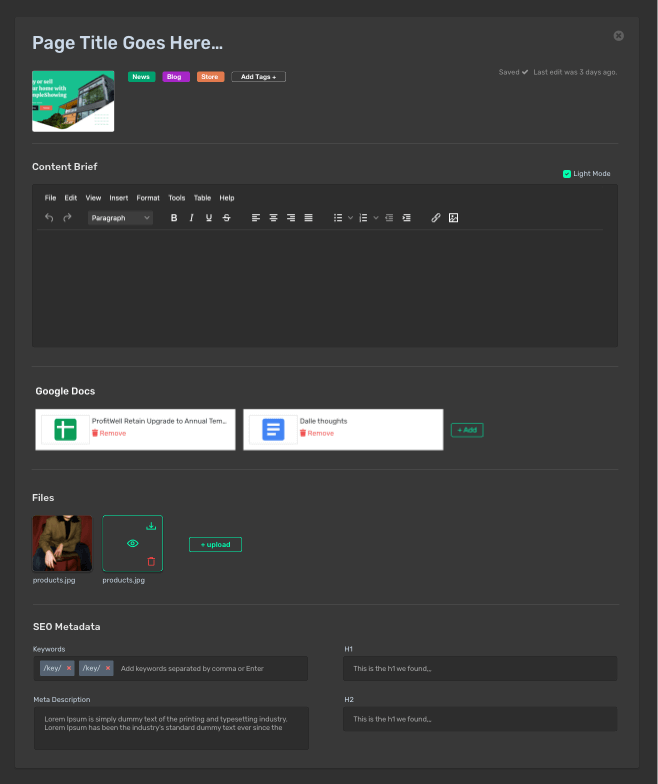
Step 2: Automating Data Enrichment
2.1 Exporting to CSV
With one click, Rashida exports competitor URLs and screenshot links from VisualSitemaps. Rather than manually copying dozens or hundreds of links, she simply downloads a CSV containing:
- Page URLs
- Screenshot URLs
- Page titles & SEO metadata
- Custom Tags ( for flagging specific pages )
This CSV becomes the foundation for her next step: feeding data into no-code automations.
2.2 Feeding Airtable, using Google Vision, and more AI
Rashida uploads the CSV into Airtable, where she’s built custom workflows and scripts to gather text, images, and brand elements:
- Screenshot Import: Airtable stores each competitor page’s screenshot URL.
- Text Extraction (Google Vision+ Airtable): Converts page screenshots into usable text.
- Color Scheme (Google Vision+ Airtable): Analyzes visuals for color schemes.
- Keyword Analysis: ( SEMrush/Ahref),Pulls in more detailed keyword data for each page (if needed) Helps pinpoint top-performing content.
- ChatGPT: each page’s text is then logged for pattern analysis—tone, style, calls-to-action, length, etc.
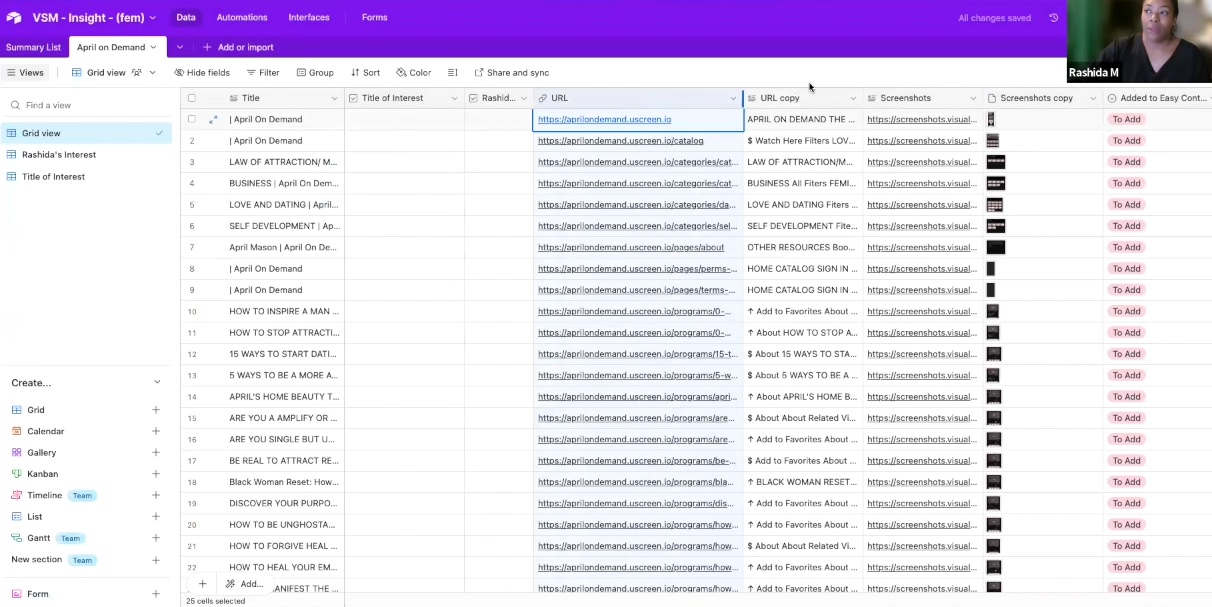
“With Airtable, one click pulls out text from hundreds of competitor pages. I see brand styles, fonts, and hooks all in one place.”
Building a Usable Knowledge Base
All the extracted text—from page copy to headlines—is stored in Airtable. Rashida tags each piece of content with notes on tone, length, and calls-to-action. This forms a knowledge base she’ll soon feed into AI writing and design tools.
Step 3: Generating Visuals and Brand Assets with AI
3.1 Turning Screenshots into Style Guides
Rashida refers to this step as her “AI Magic” phase. Armed with competitor insights and enriched data, she uses several generative AI tools to create brand assets quickly:
- UIReplicator
- Clones a site’s layout into editable components (fonts, colors, spacing)
- Great for dissecting competitor design systems
- Midjourney
- Generates custom graphics, illustrations, or style references based on competitor screenshots or brand mood boards
- Ideogram
- Iterates on specific design concepts, such as icons or logo variations
- Allows Rashida to “upload a sample screenshot and receive multiple design variations”
- GPT (ChatGPT or Claude)
- Ingests the curated competitor copy from Airtable
- Summarizes brand voice and tone
- Drafts new headlines, landing pages, social media content, or email campaigns
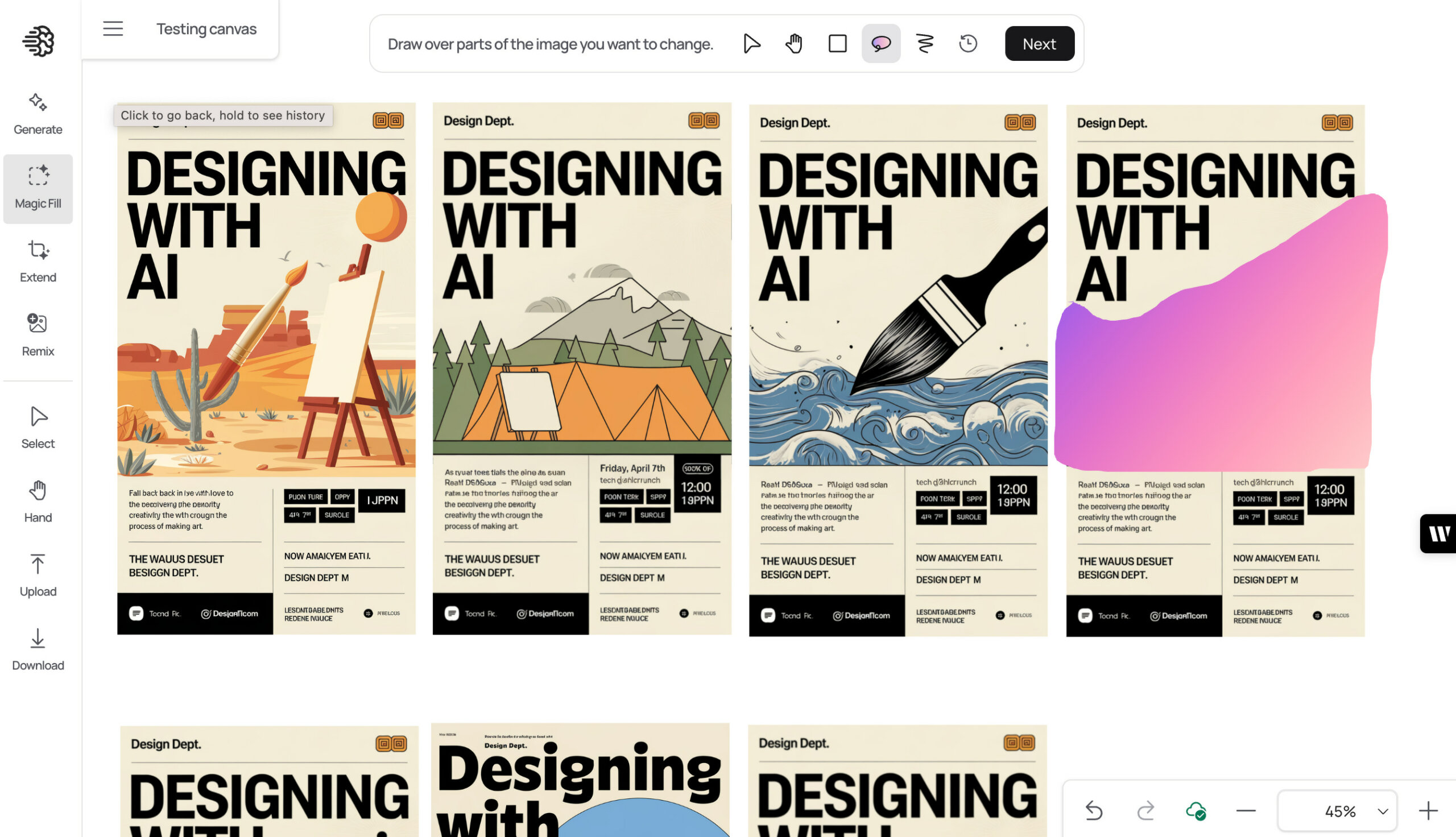
“Instead of guessing the look-and-feel, I feed AI 20 top competitor pages. It auto-generates style options, saving us endless design revisions.”
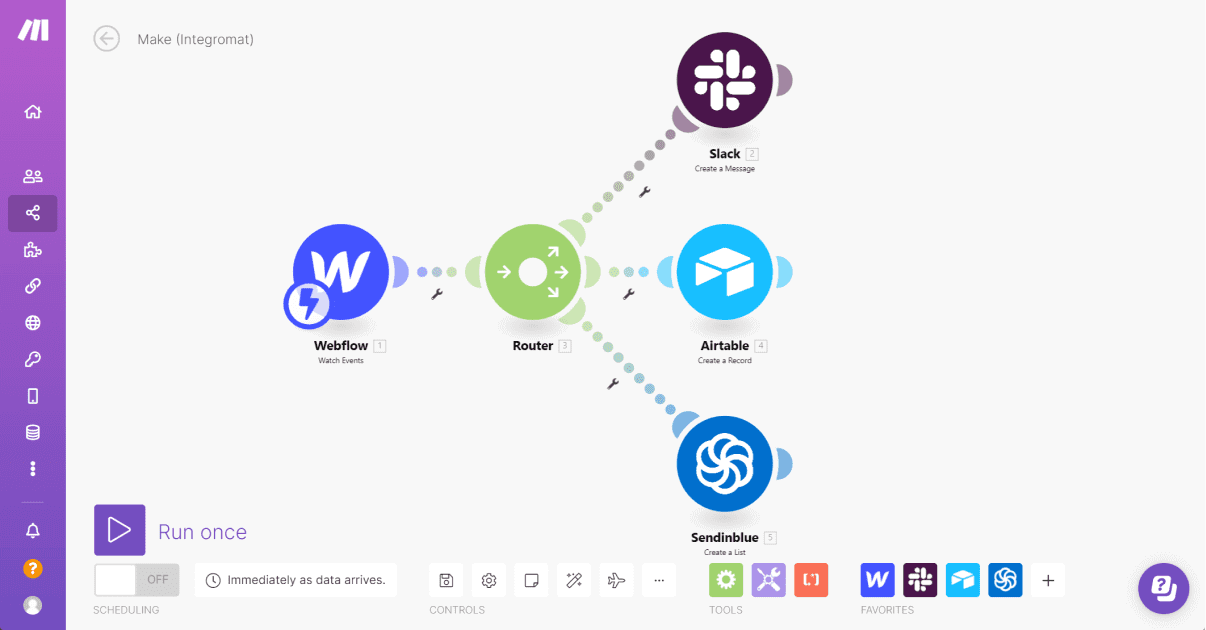
3.2 No-Code Flows with Make.com
To orchestrate these steps, Rashida relies on Make.com. Using pre-built modules, she connects VisualSitemaps CSVs, Airtable records, and AI design tools in a single, automated pipeline:
- Trigger: New competitor CSV arrives in Airtable.
- Action: With the Screenshots, run a sequence of AI prompts for style guidelines, copy templates, etc.
- Output: Auto-generated brand design files and text.
Step 4: Crafting Copy and Customer Journeys
4.1 Building a Knowledge Base for GPT or Claude
Having used the AI tools to spin up designs and copy, Rashida rapidly assembles the final deliverables:
- Style Guide
- Color palette, typography, brand voice
- Extracted from competitor analyses and refined with AI
- Ads
- Google, Facebook, LinkedIn campaigns
- GPT-based copy, AI-generated visuals
- Emails
- Automated sequences, newsletters, drip campaigns
- Fully aligned with the brand’s new style and tone
- Websites
- Landing pages, micro-sites, or full site rebuilds
- Deployed on a no-code CMS or a custom environment, depending on client needs
Effective market research is crucial in gathering competitor insights and informing the knowledge base. It helps distinguish a business’s offerings and creates a robust sales and marketing strategy that sets it apart in the market.
“Once I feed these LLMs the competitor texts, it’s a breeze to generate on-brand copy—whether for email funnels or social ads.”
4.2 Creating Customer-Facing Chatbots
Because Rashida’s clients often need self-service support, she uses Pickaxe or similar chatbot builders to ingest site content. This gives site visitors a Q&A interface that feels like live support, but is actually powered by the curated knowledge base.
Step 5: Fast Launch and Iteration
5.1 Spinning Up the Micro-Site
Armed with brand-ready design assets and AI-generated copy, Rashida or her clients deploy a minimal CMS or landing page service—often within days. By referencing her curated competitor insights, she ensures every page is optimized for conversions, branding, and clarity.
5.2 Tracking and Refining
VisualSitemaps’ scheduled crawl feature helps Rashida monitor competitor changes over time. She configures monthly recrawls to spot newly added pages, updated landing pages, or shifting brand strategies—then rolls those insights back into her automations.
Results & Key Takeaways
- ✅ Massive Time Savings: Rashida reduced a multi-week research phase to a few days by leveraging VisualSitemaps for automated site crawls and exporting that data into Airtable.
- ✅ Seamless AI Workflows: Integrating with Make.com let her hand off competitor screenshots and text to generative AI tools—yielding ready-to-use style guides and brand assets.
- ✅ Consistent, Data-Driven Branding: By scraping real competitor data, she quickly pinpoints the best-performing copy, layout patterns, and audience angles. AI then spins up her own custom brand voice and visuals.
- ✅ Ongoing Competitive Insight: Scheduled crawls inside VisualSitemaps allow for continuous updates, ensuring each micro-site remains fresh and aligned with the latest market trends.
“We can build, brand, and launch a micro-site in under a week—backed by real competitor intel and fully AI-driven content.”
Conclusion
Rashida’s approach highlights the power of combining VisualSitemaps, no-code platforms like Airtable, automation engines such as Make.com, and a suite of AI design and language tools. By starting with a clear snapshot of competitor sites, extracting actionable data, and letting AI do the heavy creative lifting, she achieves rapid launches that would otherwise demand large teams and weeks of work.
Ready to supercharge your site-building workflow? Explore VisualSitemaps to automate your competitor research, streamline your content generation, and launch your next brand project faster than ever.
About the Consultant
Rashida Mendes is a digital marketing and bizdev strategist and no-code expert who specializes in rapid product launches. She leverages AI, automation, and data-driven methods to help businesses grow their presence online. Her process exemplifies what’s possible when powerful tools like VisualSitemaps seamlessly connect with AI-driven workflows.
